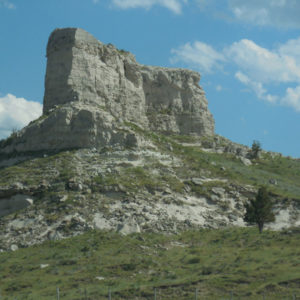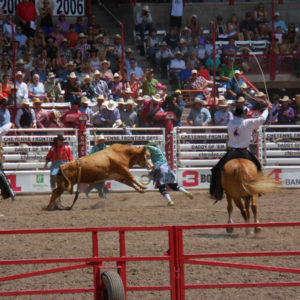On our road trip though the USA this summer, we decide to visit Wyoming to experience (again) the wide open spaces, high plains and rugged character of the western frontier. And it really is still the wild frontier in America.
he western portion of the state is covered mostly by mountain ranges (think Grand Tetons, foothills of the Rocky Mountains, and Yellowstone National Park) while the eastern portion consists of high elevation prairie, known as the High Plains (where Devils Tower is located). The Continental DivideIn runs through the middle of Wyoming, separating the mountains from the high plains.
Mineral extraction, tourism and agriculture/ranching are the driving economic factors in the state. At least 6 million tourists per year visit the national parks and monuments in Wyoming. However, it is the least populous state in the US (with only ~580,000 people) while it is the 10th largest state (253,340 km2).
Having been to the western part of Wyoming in 2008, we instead visit the eastern portion on this trip. We want to stay in the capitol city of Cheyenne in the southeastern part, the most populous city in the state (population about 63,000). However, we can not find any place to stay with a room available for the weekend we choose to visit! Searching on the internet, I discover that this particular weekend is the last weekend of something called Cheyenne Frontier Days (CFD), the largest outdoor rodeo in the world, nicknamed “The Daddy of ‘em All”. Undeterred by the lack of hotel rooms, we decide we have to attend the rodeo and finally find a place to stay in the city of Laramie, 40 miles east of Cheyenne.
Since Wyoming lacks any professional sports teams due to its low population, rodeo has become the major sporting event in the state. According to the CFD website, the first rodeo took place in 1897 and consisted of a cowboy roundup featuring bronco busting and steer roping contests. The cowboys also showed off their cattle-branding, bucking bronco-riding skills and rope tricks. More than 100 years later, the CFD is now a 10-day event, attracting a quarter of a million attendees and 1200 competitors who vie for the more than $1 million dollars in prize money.
We visit CFD on the Saturday of the last weekend, when many final and semi-final competitions are taking place. Not knowing what to expect, we enter the grounds and are enveloped in a carnival-like atmosphere with amusement rides and games, goods and wares stalls, and food stands surrounding the enormous rodeo stadium. After wandering around the grounds, we enter the 20,000-seat stadium itself for the 3-hour rodeo. On the program for the day was bucking bronco-riding contests, barrel-racing, bull-riding, steer-roping, wild-horse racing, and exhibitions of rope tricks and horseback-riding skills.
We watch in fascination as a cowboy on horseback chases after a running steer, leans from the horse to grab the horns of the steer, jumps off the horse to stop the steer and then wrestles him to the ground, all within the winning time of 8.5 seconds! Likewise, we see other cowboys ride bareback on bucking bulls for at least 8 seconds before leaping off their backs and hoping not to get gored or trampled or break something. The padded rodeo clowns are fearless in attracting the bull’s attention after the ride so that the cowboy can get away but many times I thought someone would end up in the hospital from the aggressive (and massive) bull.
The rodeo announcers are celebrities in these communities and keep the excitement going in an extremely entertaining manner. They provide background information about the competitors, give colorful descriptions of the action and make sure everything moves along smoothly, a real skill when dealing with cantankerous animals as well as hundreds of cowboys. The three hours pass before we know it and we come away with increased respect for the sport and those who compete.
Experiencing the rodeo also gives us a deeper understanding of the land and its people, and an appreciation of the history and way of life that is still lived in Wyoming. There is still so much more to explore in this state and we will definitely be going back to visit.
 +31 (0)50 367 71 97
+31 (0)50 367 71 97  info@connect-int.org
info@connect-int.org




